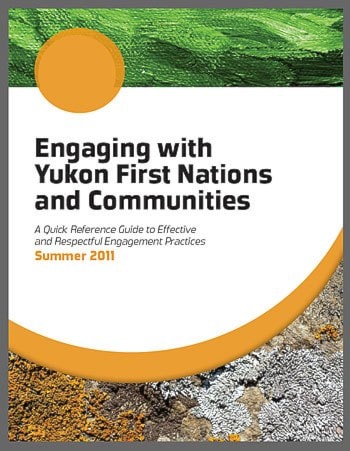The Peel debate has pitted First Nations and the mining industry against each other.
But on Friday, the product of a partnership between the two most vocal First Nations in the Peel, and the Yukon Chamber of Mines was published.
It’s a 22-page guide for mining and resource companies.
Starting out as an updated list of contacts and information, the guide evolved into a broader look at doing business with the local aboriginal population, said chamber president Claire Derome.
“About a year ago, we were approached by both First Nations to initiate some discussion on how we could improve communication and relationships between our industry and First Nation governments,” said Derome.
And while the Na-cho Nyak Dun and Tr’ondek Hwech’in First Nations co-authored the guide with the chamber, it is general enough to be used by all Yukon First Nations, added Derome.
The guide begins with a brief, basic and common sense checklist for companies looking to work in the Yukon.
It includes things like making sure to fulfill obligations under the final agreements and use local knowledge, suppliers and expertise when available.
It then explains Yukon First Nations are self-governing and should be treated like a territorial government, and not as simple stakeholders.
It notes that while three Yukon First Nations are not self-governing, they still have inherent rights and authority in their traditional territories.
The guide also discusses Yukon communities and how their long history with “boom and bust” economies make them concerned about a project’s lifespan.
With mention of impact-benefit agreements, the differences between First Nation governments and their development corporations, local benefits and regulatory processes, like the Yukon Environmental and Socio-economic Assessment Board, the guide clearly notes the importance of early engagement with local First Nations.
“We tried to provide basic guidance with the hope that this will help generate earlier contact than is currently happening,” said Derome.
“And I think it’s happening because it’s a lack of understanding of who they need to talk to, how and when. So that’s what this guide is trying to address.”
Before seven full pages of contact numbers, term definitions and website links to legislation, maps, information and affected organizations, a more detailed checklist is provided.
This one includes a warning about the effect residential schools had on communities and to be aware and respectful of cultural activities, like hunting and fishing season, potlatches and general assemblies.
Although there is also legal and political enforcement, this guide will be read and could, hopefully, help improve relations between industry and First Nations, said Derome.
“First of all, ourselves, we have 400-plus members,” she said. “Then we also have another way to communicate with companies, even if they are not members. We’ve made sure that it’s going to be posted on the government’s website, so it’s been distributed widely.”
The chamber’s membership in national industry organizations and its attendance at national forums will also allow for this guide to be read past Yukon’s borders as well, she said.
Currently it is available at the chamber’s website, in PDF format. Hard copies will soon be printed.
Contact Roxanne Stasyszyn at roxannes@yukon-news.com
